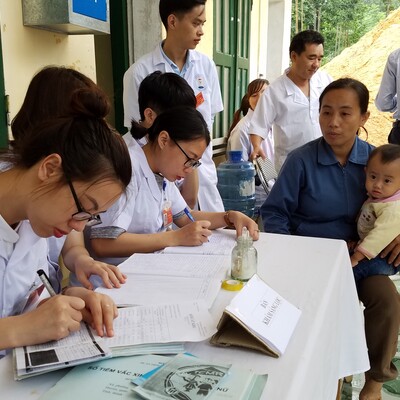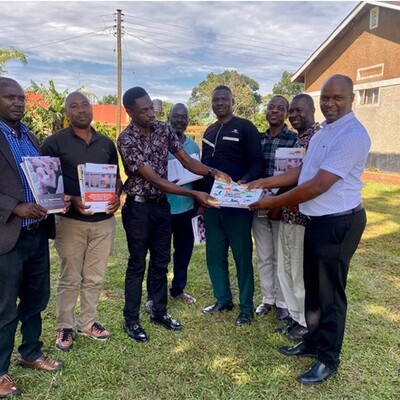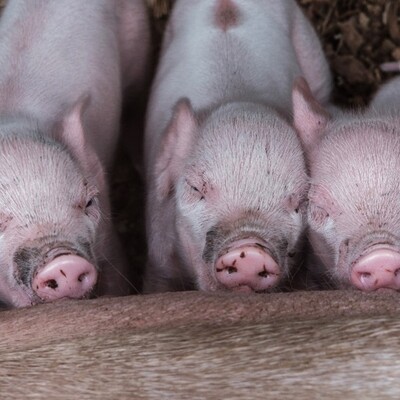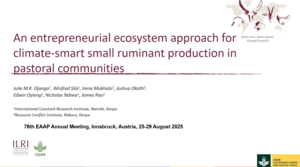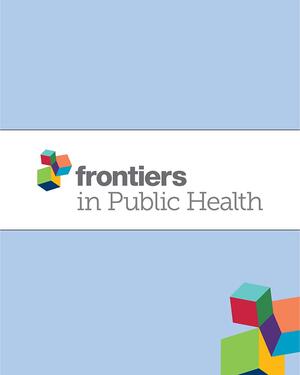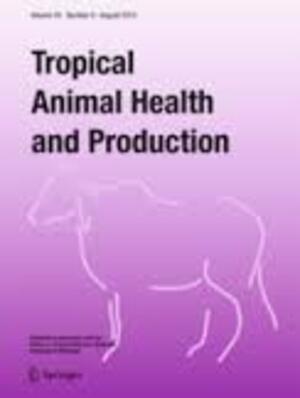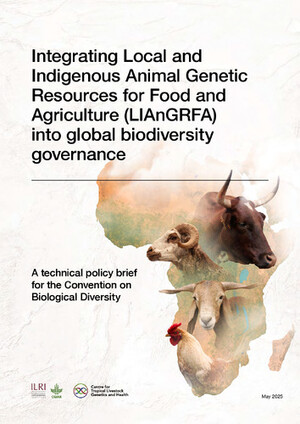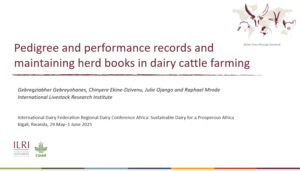
Working towards sustainable livestock systems - a focus on three CGIAR initiatives at the FAO Science and Innovation Forum
Sustainable livestock systems are crucial for supporting livelihoods and nutrition in the Global South, but face pressing climate-related challenges. Adapting these systems will ensure that the economic, social and environmental integrity of livestock-rearing communities is preserved.
Working towards transforming livestock systems was the premise of the side event, ‘Sustainable livestock production as a solution for climate, health, nutrition and livelihoods’ at the FAO Science and Innovation Forum held virtually on 13 October 2022. The Forum’s main objective this year was to highlight ‘the centrality of science, technology and innovation for agrifood systems transformation.’ The side event focused on the CGIAR’s new livestock systems research agenda, some key innovations from these initiatives and a discussion with a panel of experts about integrating the innovations into the current reality.
In his opening remarks, Iain Wright, deputy director general of integrated sciences at ILRI, emphasized how livestock acts as a multi-problem-solving power. ‘The best way to ensure sustainable livestock is not to exclude livestock from the discussion on sustainable development, but rather to make sure that livestock options are part of the solutions.’
Livestock systems in the CGIAR
CGIAR’s new research agenda places the livestock sector at the forefront. The agenda contributes to advancement of the sector through research-based solutions to drive the transition to sustainable, resilient livelihoods and to productive small-scale enterprises. The agenda focuses on three target areas: sustainable animal productivity, One Health and livestock and climate.
The Sustainable Animal Productivity Initiative aims to transform livestock sectors in targeted countries by driving them to be more productive, resilient, equitable and sustainable. This is done through innovation packages—incorporating enhancing technologies into the institutional arrangements necessary for their adoption while working to open enabling environments and market access.
The Livestock and Climate Initiative is working to adapt livestock systems to climate change and reduce greenhouse gas emissions. It includes extensive research on local capacity, developing digital services and financing the transition to resilient livestock production systems.
Finally, the One Health Initiative is demonstrating the importance of One Health principles and tools (bringing together animal health, human health and environmental health) in food systems for improved food safety and reduced disease burden.
‘The new CGIAR initiatives are critical to contribute to agri-food systems transformation for affordable and sufficient diets produced within planetary boundaries in the climate crisis,' said Martin Kropff, managing director of the Resilient Agri-Food Systems at the CGIAR.
Innovations in livestock systems
Three case studies were then presented on how specific interventions are addressing these challenges. Each innovation incorporates technical, social and institutional aspects to holistically address the climate change imperative.
For Arshnee Moodley, CGIAR AMR (anti-microbial resistance) Hub leader, AMR is all about the need to ‘balance two opposing arms – the essential role of antimicrobials to human, animal and crop health and its continued use resulting in lower efficacy, particularly in the livestock and veterinary sector.’ Her research within the One Health target area focuses on AMR resistance and antibiotic use as part of a greater animal health package, especially in the context of low- and middle-income countries.
The second speaker, Barbara Rischkowsky, Resilient Agrosilvopastoral Systems team leader at ICARDA, explained the Small Ruminant Value Chain Transformation work package, which encompasses the innovations of better sheep and goat genetics, improved feeding strategies, greater gender capacity, stronger herd health and more streamlined markets for smallholders. ‘This work package addresses the challenges we identified when we talked with communities and conducted field research in Ethiopia,’ she explained. The program started on the Washera, Ethiopia sheep population under consultation from local communities and is being scaled out via local champions to other areas of the country.
Finally, James Rao, agriculture economist at ILRI, discussed the Dairy Sector Improvement Innovation package in Kenya. His presentation focused on the importance of bundling technologies for effective delivery of services. The package identifies low productivity among smallholder dairy farmers, which decreases their competitiveness on the market and creates a cycle of low input and output. ‘We believe that it is not just the individual technologies that can actually work and deliver a result to farmers, but the technology needs to be adopted together to have a more effective result', he said. The innovation package focuses on stronger animal health, better genomics selection and improved feed and forage delivered to dairy farmers through shared community managers.
The experts weigh in
The final section of the event was an expert panel discussion focused on integrating livestock innovations into private-sector investments and policy. Several themes emerged out of the conversation, including the importance of establishing feedback loops and One Health approaches and the need to transform research to on-the-ground implementation.
Feedback loops, the process of informing future decisions based on past results, was discussed as essential for adapting to different contexts. Dai Harvey, technical director at Land O’Lakes Venture37, remarked on the need to focus on policy and enabling environments, particularly on the need to tailor solutions to fit different regions and countries. Within these loops, data-driven decisions are essential to ensure success and additional support of the programs. Lee Cando-Noordhuizen, Climate Change and Operations Specialist at the World Bank, emphasized the need for better data, especially on climate change mitigation strategies, to inform the private sector on how to invest in sustainable livestock systems.
A One Health approach was discussed as an essential asset to encapsulate all necessary factors fully. Badi Besbes, FAO senior animal production officer at the Animal Production and Health Division and Secretary of the COAG (Committee on Agriculture) Sub-Committee on Livestock, noted the importance of integrated approaches for all solutions, especially for addressing anti-microbial resistance.
Finally, the panellists emphasized the importance of research and knowledge not remaining in the lab and among the experts. Mariángela Ramírez, senior agriculture specialist at the World Bank, noted how the public’s perspective on livestock is changing. She highlighted the need to make sure that knowledge doesn’t remain in the lab but transforms policy and disseminates through private investments in the field. Tinni Sawhney, CEO of the Aga Khan Development Network India, also emphasized the need for continued research on the ground. She gave the example of a health initiative in India, created among experts, which now employs women to surveil livestock diseases, as a two-pronged solution to reduce disease outbreaks and better achieve gender parity in the sector.
Wright summarized the event around five points: 1) there are many opportunities for livestock sector improvement but also challenges in the face of climate change; 2) there are no one-size-fits-all solutions, especially between the Global North and Global South but also on a country-by-country basis; 3) the importance of bundling solutions together—that innovation cannot be adopted without enabling environments, effective policy and accessible markets; 4) actors in the livestock sector need to be aligned so that there can be advocacy under a unified voice; and finally, 5) while there are tradeoffs, synergies outweigh them—improving the livestock sector will work to improve the economy and livelihoods while also mitigating the effects of climate change. 'At the end of the day, if we work together, we can identify and achieve a common vision', Wright concluded.
Banner photo: A dairy farmer feeds her calves born in an improved dairy breeding system in Muhoroni sub-county, Kenya. Photo Muthoni Njiru/AVCD






